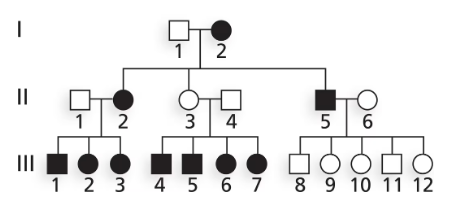Draw a graph depicting the relative amounts of nuclear DNA present in the different stages of the cell cycle (G₁,S,G₂,M). On the same graph, plot the amount of mitochondrial DNA present at each stage of the cell cycle.
Table of contents
- 1. Introduction to Genetics51m
- 2. Mendel's Laws of Inheritance3h 37m
- 3. Extensions to Mendelian Inheritance2h 41m
- 4. Genetic Mapping and Linkage2h 28m
- 5. Genetics of Bacteria and Viruses1h 21m
- 6. Chromosomal Variation1h 48m
- 7. DNA and Chromosome Structure56m
- 8. DNA Replication1h 10m
- 9. Mitosis and Meiosis1h 34m
- 10. Transcription1h 0m
- 11. Translation58m
- 12. Gene Regulation in Prokaryotes1h 19m
- 13. Gene Regulation in Eukaryotes44m
- 14. Genetic Control of Development44m
- 15. Genomes and Genomics1h 50m
- 16. Transposable Elements47m
- 17. Mutation, Repair, and Recombination1h 6m
- 18. Molecular Genetic Tools19m
- 19. Cancer Genetics29m
- 20. Quantitative Genetics1h 26m
- 21. Population Genetics50m
- 22. Evolutionary Genetics29m
3. Extensions to Mendelian Inheritance
Organelle DNA
Problem 10
Textbook Question
You are a genetic counselor, and several members of the family whose pedigree for an inherited disorder is depicted in Genetic Analysis 17.2 consult with you about the probability that their progeny may be afflicted. What advice would you give individuals III-1, III-2, III-4, III-6, III-8, and III-9?

 Verified step by step guidance
Verified step by step guidance1
Analyze the pedigree chart to determine the inheritance pattern of the disorder. The filled symbols (black squares and circles) represent affected individuals, while the unfilled symbols represent unaffected individuals.
Identify whether the disorder is autosomal dominant, autosomal recessive, X-linked dominant, or X-linked recessive based on the pattern of inheritance. For example, if affected individuals appear in every generation and both males and females are affected, it is likely autosomal dominant.
Determine the genotype of each individual in the pedigree. For autosomal recessive disorders, affected individuals are homozygous recessive (aa), while carriers are heterozygous (Aa). For autosomal dominant disorders, affected individuals are either heterozygous (Aa) or homozygous dominant (AA).
For each individual (III-1, III-2, III-4, III-6, III-8, III-9), calculate the probability of passing on the disorder to their progeny based on their genotype and the genotype of their partner. Use Punnett squares to visualize the inheritance probabilities.
Provide advice to each individual based on the calculated probabilities. For example, if an individual is a carrier of an autosomal recessive disorder, they have a 50% chance of passing the carrier status to their child if their partner is unaffected, and a 25% chance of having an affected child if their partner is also a carrier.
 Verified video answer for a similar problem:
Verified video answer for a similar problem:This video solution was recommended by our tutors as helpful for the problem above
Video duration:
5mPlay a video:
Was this helpful?
Key Concepts
Here are the essential concepts you must grasp in order to answer the question correctly.
Pedigree Analysis
Pedigree analysis is a diagrammatic method used to trace the inheritance patterns of traits or disorders through generations of a family. It helps genetic counselors and researchers understand how a genetic condition is passed down, identifying affected and unaffected individuals, and determining the likelihood of occurrence in future generations.
Recommended video:
Guided course

Pedigree Flowchart
Inheritance Patterns
Inheritance patterns refer to the ways in which genetic traits are transmitted from parents to offspring. Common patterns include autosomal dominant, autosomal recessive, X-linked dominant, and X-linked recessive. Understanding these patterns is crucial for predicting the probability of offspring being affected by a genetic disorder based on the genotypes of the parents.
Recommended video:
Guided course

Organelle Inheritance
Genetic Counseling
Genetic counseling is a process that provides individuals and families with information about genetic disorders, including risks, testing options, and implications for health. Counselors help interpret genetic information, guide decision-making, and support families in understanding the emotional and social aspects of genetic conditions, particularly when considering the health of future progeny.
Recommended video:
Guided course

Descriptive Genetics

 4:11m
4:11mWatch next
Master Organelle DNA Characteristics with a bite sized video explanation from Kylia
Start learningRelated Videos
Related Practice
Textbook Question
385
views
